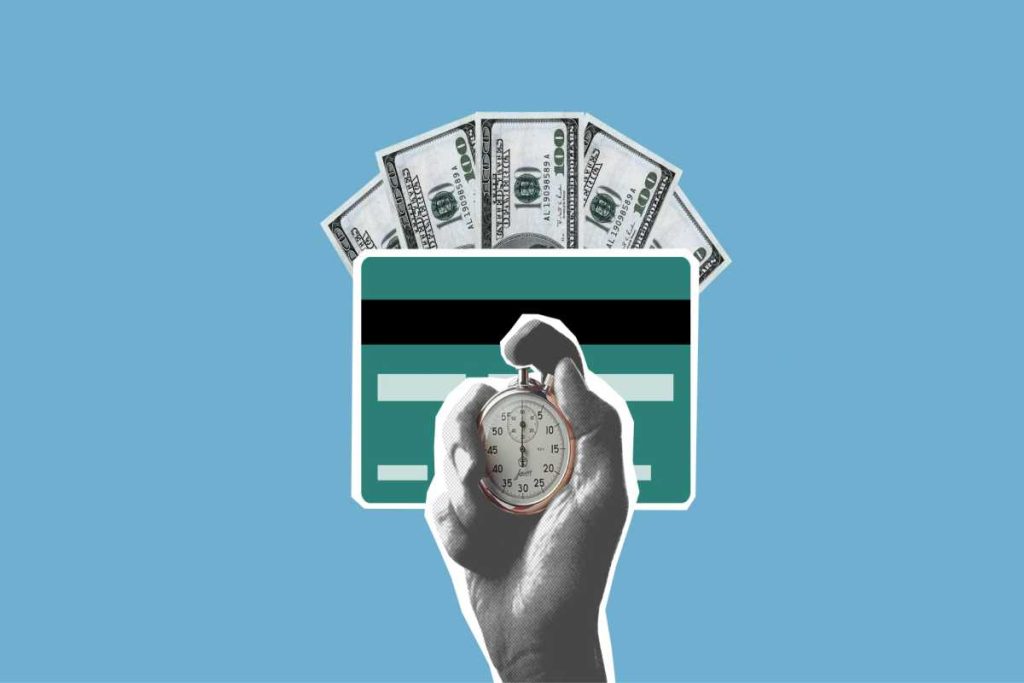Becoming a stay-at-home mom is a dream for many women, allowing for precious moments with children, the ability to shape their upbringing, and the opportunity to create a nurturing home environment. However, transitioning from a dual-income household to living on one income requires careful financial planning and disciplined saving strategies. This blog will guide you through practical steps to save money, allowing you to live your dream life as a stay-at-home mom while ensuring financial stability.
Understanding the Financial Shift

Before diving into saving strategies, it’s essential to understand the financial implications of becoming a stay-at-home mom. Taking a step back and evaluating your current financial situation will help set the groundwork for the transition. Here are some key areas to focus on:
1. Evaluate Your Current Income
Assess your current household income and how much you’ll need to live comfortably without your income. Calculate the amount needed to cover essential expenses while maintaining your family’s standard of living.
2. Identify Essential Expenses
List your monthly expenses, including housing, utilities, groceries, insurance, transportation, childcare (if applicable), and any other necessary costs. Understanding these figures is crucial in determining how much you need to save before making the transition.
3. Plan for Future Expenses
Anticipate additional costs that may arise once you become a stay-at-home mom. These may include:
- Increased Healthcare Costs: Depending on your health insurance plan, your costs might increase when you switch to a single income.
- Education and Extracurricular Activities: If you have school-aged children, consider future costs related to education and activities.
- Emergency Savings: Aim to have a buffer in case unexpected expenses arise.
Once you have a clear understanding of your financial situation, you can implement strategies to save money effectively.
1. Create a Detailed Budget
Creating a budget is the foundation of any successful financial plan. It allows you to track your income, expenses, and savings goals while providing clarity on your financial priorities.

How to Implement:
- Categorize Expenses: Divide your expenses into fixed (rent, utilities) and variable (groceries, entertainment) categories. This will help you identify areas where you can cut back.
- Set Savings Goals: Determine how much you need to save each month to reach your goal of becoming a stay-at-home mom. Aim for at least six months’ worth of essential expenses saved before transitioning.
- Use Budgeting Tools: Utilize budgeting apps or spreadsheets to track your expenses and savings. Regularly review your budget to stay on track. Tools like Mint, YNAB (You Need a Budget), and Personal Capital can help you visualize your financial situation.
- Monitor Progress: Keep an eye on your progress and adjust your budget as needed. Celebrate milestones, such as reaching a savings goal or successfully cutting a recurring expense.
2. Cut Unnecessary Expenses
Identifying and cutting unnecessary expenses is crucial for saving money. Small changes in your spending habits can add up significantly over time, contributing to your overall savings.
How to Implement:
- Review Subscriptions and Memberships: Cancel unused subscriptions, such as streaming services, gym memberships, or magazine subscriptions. Evaluate which services you truly use and need.
- Limit Dining Out: Reduce the frequency of eating out or ordering takeout. Cooking at home is not only healthier but also significantly cheaper. Make it a family activity by involving your children in meal preparation.
- Shop Smart: Use coupons, take advantage of sales, and buy in bulk when possible. Consider shopping at discount grocery stores or farmers’ markets for fresh produce at lower prices. Always make a shopping list before going to the store to avoid impulse purchases.
- Evaluate Your Living Situation: If you own your home, consider the option of refinancing your mortgage for a lower interest rate. If you’re renting, think about whether you could move to a more affordable place.
- Reduce Utility Costs: Be mindful of energy consumption by turning off lights when not in use, unplugging devices, and using energy-efficient appliances. This can significantly lower your monthly utility bills.
3. Increase Your Income
While saving money is essential, increasing your income can also help you reach your financial goals faster. Consider exploring flexible work options that allow you to earn additional income without sacrificing family time.
How to Implement:
- Freelancing: Use your skills, such as writing, graphic design, or social media management, to take on freelance projects. Websites like Upwork and Fiverr can help you find clients.
- Part-Time Work: Consider part-time jobs that offer flexible hours, such as tutoring, pet sitting, or virtual assistance. Many companies offer remote part-time positions that can fit into your schedule.
- Monetize a Hobby: Turn a hobby into a side hustle. For example, if you enjoy crafting, consider selling your creations on platforms like Etsy. Photography, baking, or blogging are other avenues to explore.
- Teach or Tutor: If you have expertise in a particular subject, consider offering tutoring services to students in your area. You can also teach classes or workshops in your community, either in-person or online.
4. Build an Emergency Fund

An emergency fund is a financial safety net that can provide peace of mind and help you navigate unexpected expenses while transitioning to a stay-at-home mom.
How to Implement:
- Set a Savings Target: Aim to save at least three to six months’ worth of living expenses in your emergency fund. This can help cover essential costs if unexpected events occur.
- Automate Savings: Set up automatic transfers to a separate savings account each month to ensure you consistently contribute to your emergency fund. Treat it like a non-negotiable bill.
- Use Windfalls Wisely: Allocate any bonuses, tax refunds, or unexpected income toward your emergency fund. Consider it a way to boost your savings and reach your goals faster.
- Track Your Progress: Keep a visual tracker to monitor your emergency fund’s growth. This can motivate you to stay committed to your savings goal.
5. Downsize or Relocate
If your current living situation is not financially sustainable, consider downsizing or relocating to a more affordable area. This can lead to significant savings in housing costs, which are often the largest monthly expense for families.
How to Implement:
- Evaluate Housing Costs: Assess your current housing situation. Can you move to a smaller home or a less expensive neighborhood? Research housing markets in areas with a lower cost of living.
- Consider Alternative Living Arrangements: If feasible, consider moving in with family or friends temporarily to reduce living costs. This can provide support while you save.
- Explore Cost of Living: Research areas with a lower cost of living that still offer good schools and amenities for your family. Sometimes relocating can provide financial relief and a better lifestyle.
- Assess Commute Costs: When relocating, consider the cost of commuting if you or your partner will still be working. Sometimes moving slightly farther from urban areas can lead to significant savings in housing.
6. Embrace Frugal Living
Frugal living involves making conscious choices to spend less and live within your means while still enjoying life. Adopting a frugal mindset can help you save money without sacrificing quality of life.
How to Implement:
- DIY Projects: Tackle home improvement or decoration projects yourself instead of hiring professionals. There are many online resources and tutorials available that can guide you through various DIY tasks.
- Plan Meals: Create meal plans and cook at home to save money on groceries. Look for recipes that use affordable ingredients and reduce food waste. Planning helps ensure that you only buy what you need, minimizing waste and unnecessary spending.
- Participate in Community Events: Take advantage of free or low-cost local events, such as community fairs, library programs, or outdoor activities. Many cities offer free classes, workshops, or events designed for families.
- Engage in Free Activities: Explore parks, hiking trails, and public libraries for free activities that can provide entertainment and learning opportunities for your children.
7. Prioritize Financial Education
Educating yourself about personal finance can empower you to make informed decisions and develop effective money-saving strategies. Understanding how to manage money effectively is crucial for long-term financial stability.
How to Implement:
- Read Books and Articles: Explore personal finance books and articles that provide insights into budgeting, saving, and investing. Titles like “The Total Money Makeover” by Dave Ramsey and “You Are a Badass at Making Money” by Jen Sincero can offer valuable perspectives.
- Attend Workshops: Look for local or online workshops focused on financial literacy and money management. Many community centers and organizations offer free or low-cost classes.
- Join Online Communities: Participate in forums or social media groups dedicated to personal finance. Engaging with others on similar journeys can provide motivation, support, and new ideas.
- Learn About Investing: As you become more comfortable with budgeting and saving, consider learning about investing. Understanding how to grow your money can enhance your financial stability in the long run.
8. Involve Your Family in Financial Planning
Making the transition to a stay-at-home mom can be a family decision. Involving your partner and children in financial discussions can create a supportive environment and teach valuable lessons about money management.
How to Implement:
- Discuss Goals Together: Have open conversations with your partner about financial goals and the benefits of becoming a stay-at-home mom. Discuss how your family will navigate the changes and make decisions together.
- Teach Children About Money: Use everyday situations to teach your children about saving, spending, and budgeting. For younger children, use a piggy bank to demonstrate saving. For older children, involve them in budgeting discussions or even let them help with grocery shopping.
- Encourage Teamwork: Create a family savings goal, such as saving for a family vacation. Involve everyone in the planning process and celebrate milestones together.
9. Utilize Government Programs and Benefits
Explore government programs and benefits that can provide additional financial support during your transition to a stay-at-home mom. Many families may qualify for assistance that can help ease financial strain.
How to Implement:
- Research Eligibility: Look into programs such as WIC (Women, Infants, and Children), food assistance, or childcare subsidies that can provide financial support for eligible families.
- Utilize Tax Credits: Familiarize yourself with tax credits that can help reduce your tax burden, such as the Child Tax Credit or the Earned Income Tax Credit. Understanding these benefits can help you make informed financial decisions.
- Seek Local Resources: Many communities offer resources and assistance for families, including food banks, clothing assistance, and childcare resources. Don’t hesitate to reach out for help if needed.
10. Maintain a Positive Mindset

Transitioning to a stay-at-home mom lifestyle can be challenging, but maintaining a positive mindset is essential for navigating the journey.
How to Implement:
- Focus on the Benefits: Remind yourself of the reasons you want to be a stay-at-home mom. Reflect on the joys of spending more time with your children and the opportunities for family bonding.
- Practice Gratitude: Keep a gratitude journal to document the positive aspects of your life. Focusing on what you’re thankful for can help shift your mindset toward abundance rather than scarcity.
- Stay Connected: Build a support network of friends and fellow stay-at-home moms. Sharing experiences and challenges can provide comfort and encouragement during tough times.
Conclusion: Living Your Dream Life as a Stay-at-Home Mom
Saving money to become a stay-at-home mom requires careful planning, discipline, and a willingness to make changes in your financial habits. By creating a budget, cutting unnecessary expenses, increasing your income, and embracing frugal living, you can achieve your goal of staying home with your children while maintaining financial stability.
Remember, the journey to becoming a stay-at-home mom is unique for everyone. Stay focused on your goals, seek support from family and friends, and celebrate your progress along the way. With determination and strategic planning, you can live your dream life as a stay-at-home mom, nurturing your family while enjoying financial security.

